Realistic Full Body Muscle Drawing
Muscles have the amazing characteristics of beingness able to bend, stretch and relax. Each of them perform a specific function depending on where they are in the body. But in full general, they are in charge of transforming the free energy sent from the nervous system into movement.
I have taken the opportunity to study them all – where they are placed, their functions, their shapes. Even so, with so many muscles in the human trunk, I have decided to only focus on the most important ones for when we draw.
The learning process may be a bit disruptive at times, so I recommend using your ain separate sketchbook to take notes in your ain time. At that place is no ameliorate way to learn!
- The Muscles of the Torso
- The Muscles of the Arms and Legs
The Muscles of the Torso
The trapezius is located on the back. This is the musculus that extends beyond the upper office of the trunk, and information technology helps to move the scapula.
The latissimus dorsi (dorsal) muscle is located in the lower office of the trunk. It is wide and flat, covering a big office of the spine all the fashion to the sacrum.
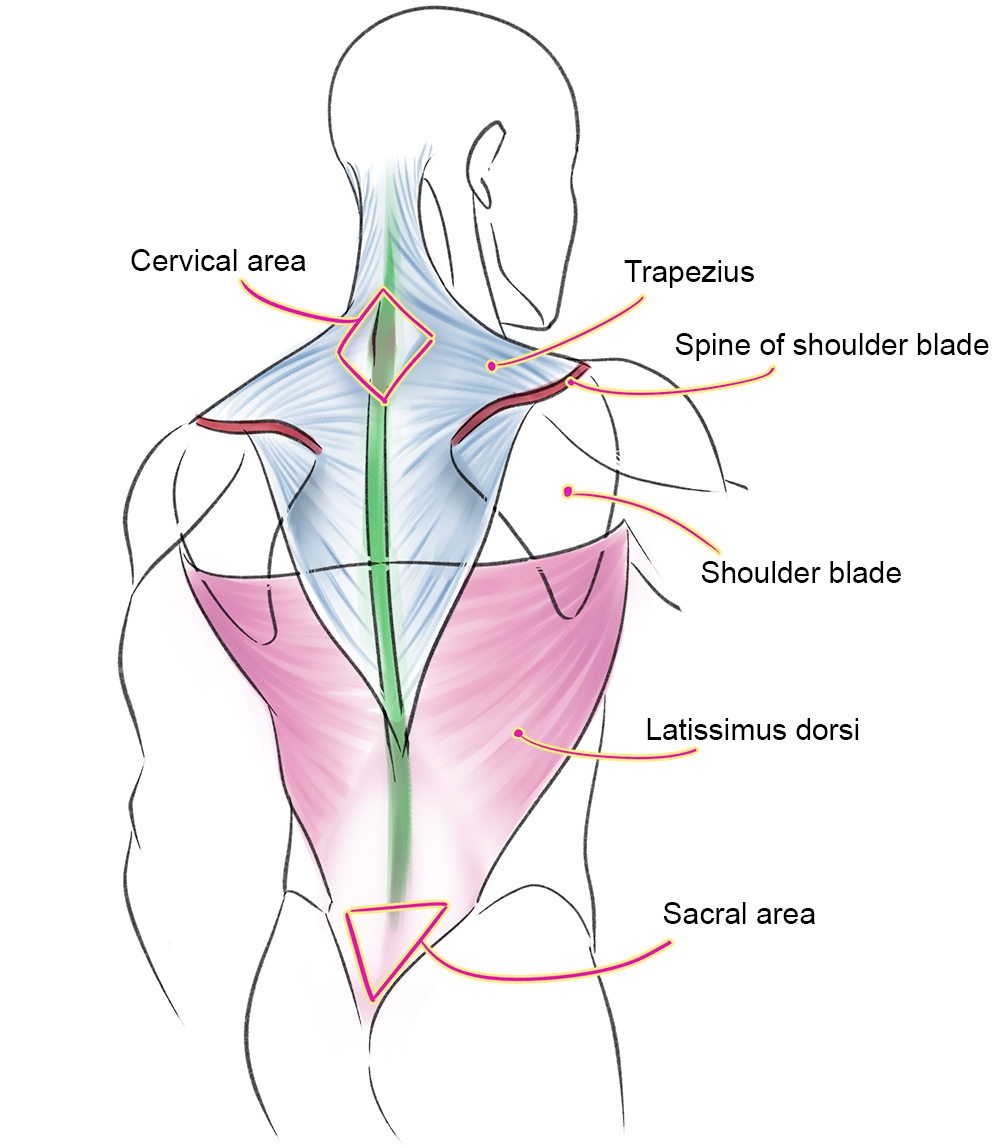
The trapezius enters the spine of the shoulder blade and the collarbones (or clavicles). When viewing from the front end, this muscle draws the outline between the neck and the clavicles – to recall them, retrieve of them every bit a couple of triangles!
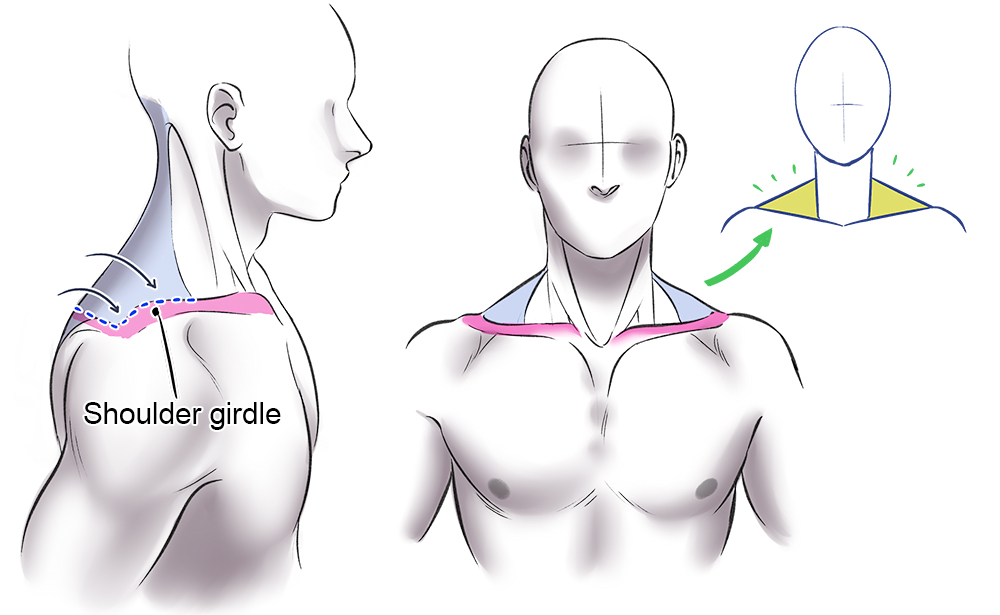
In the cervical area, you will usually come across a small indentation. It becomes visible when you clasp your shoulder blades together (A). When the muscle is relaxed, yous may see some of the bones in the spine sticking out (B).
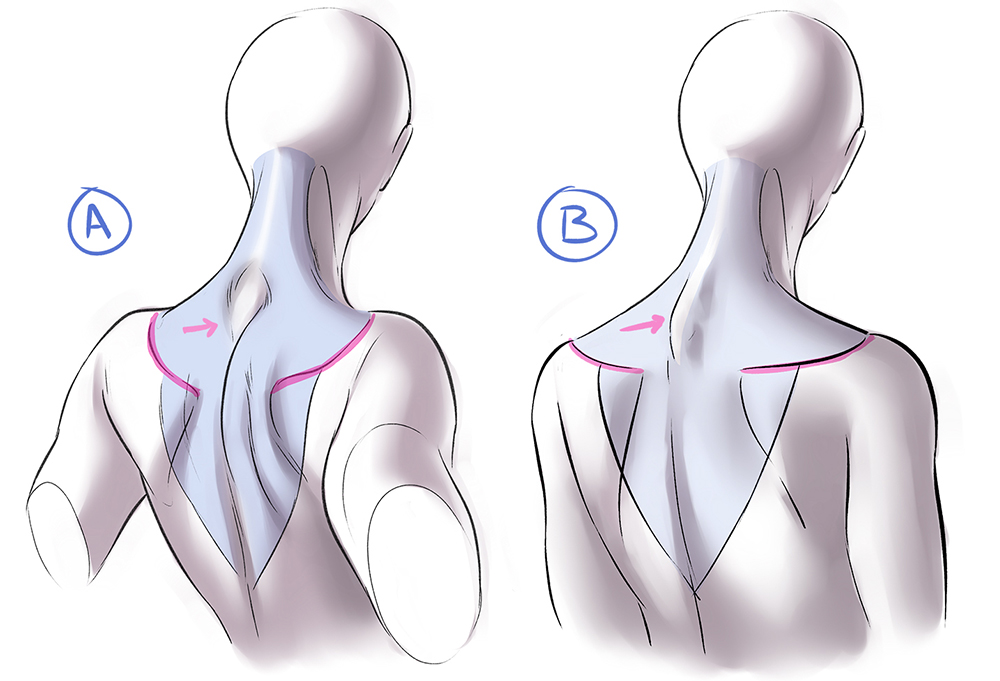
On the other hand, the dorsal muscle enters the humerus below the armpits, allowing the arms to extend and contract. Information technology'due south a flat muscle which isn't easily visible from the front, except for a modest role under the arms.
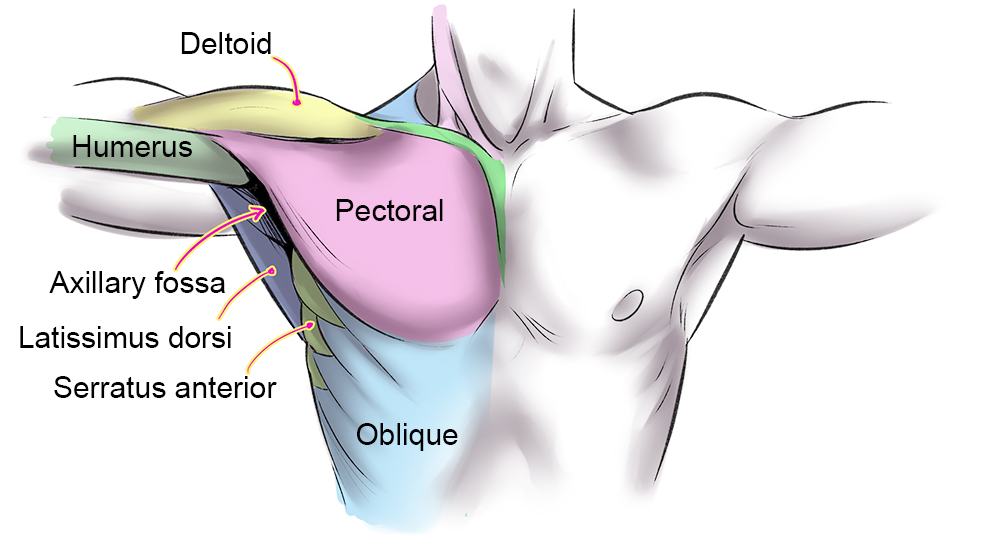
The serratus anterior is pulled from the nine upper ribs into the scapula, providing stability and mobility to the bone. This musculus is shaped similar a fan, just we tin can only see a office since it is overlapped by the pectorals, the obliques and dorsals.
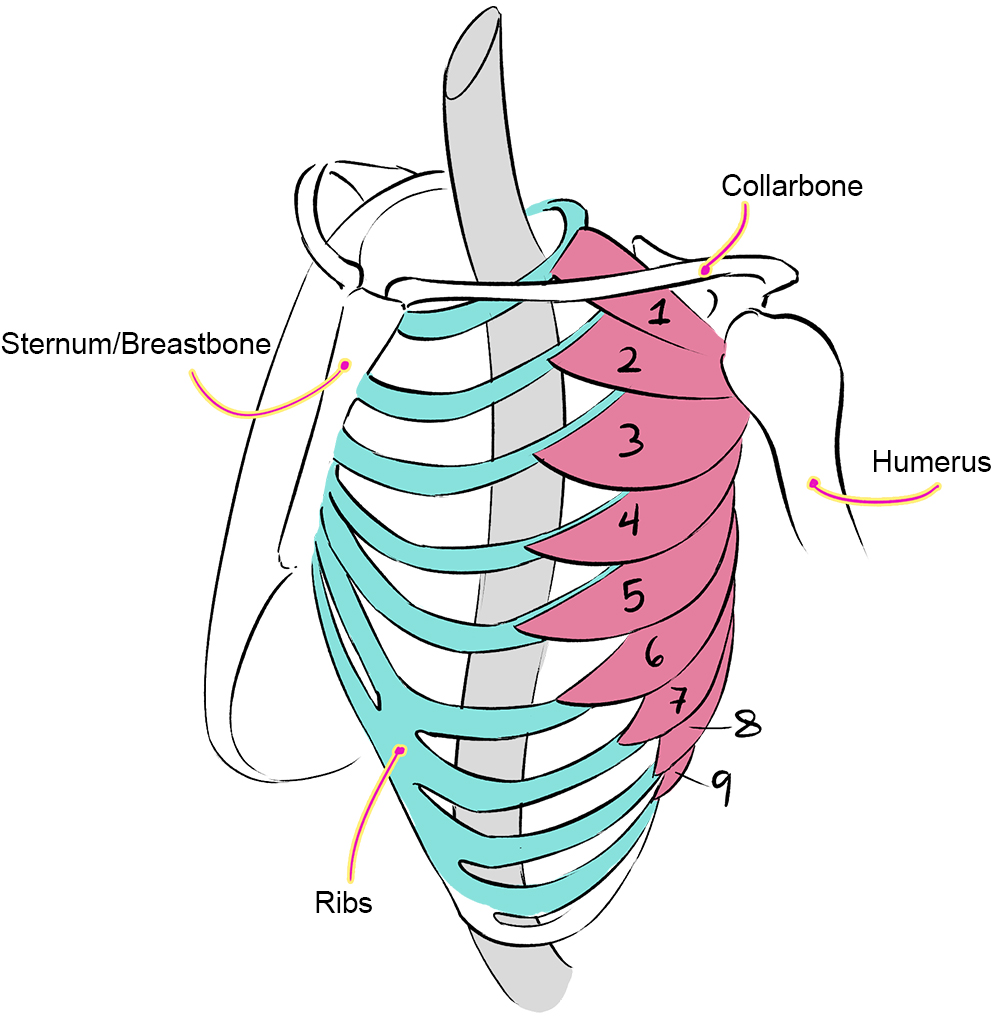
The pectorals are framed between the collarbones and the breastbone, the ends are attached to the humerus to allow the artillery to rotate (1 of its purposes).
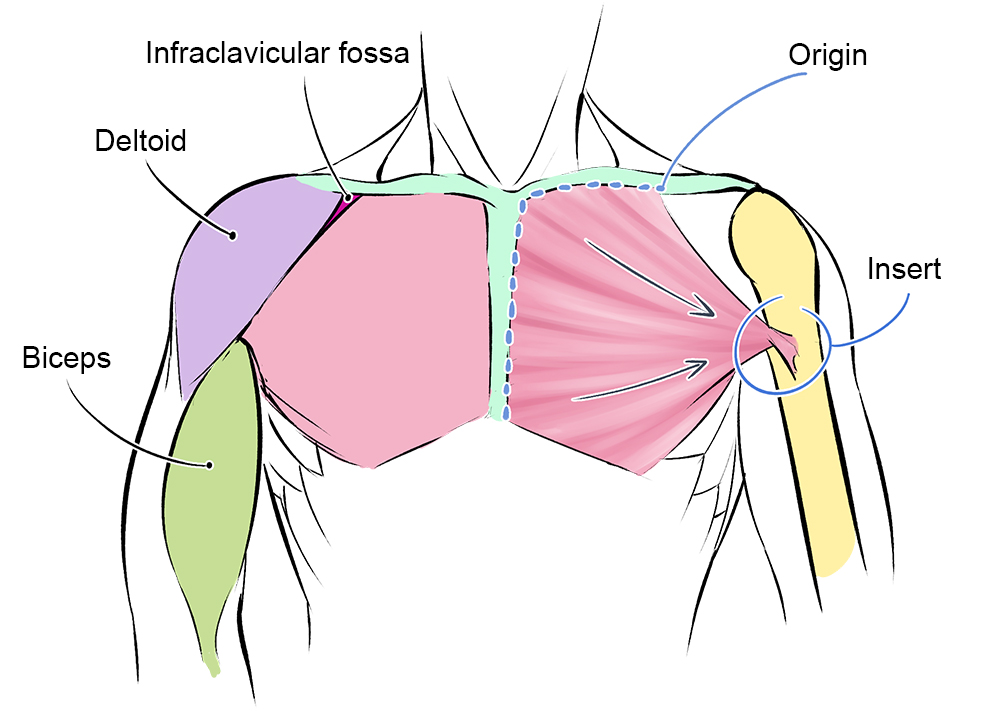
The infraclavicular fossa is the space between the pectorals and the deltoids. It is a very small-scale detail, but nonetheless quite useful to identify the gap between the muscles.
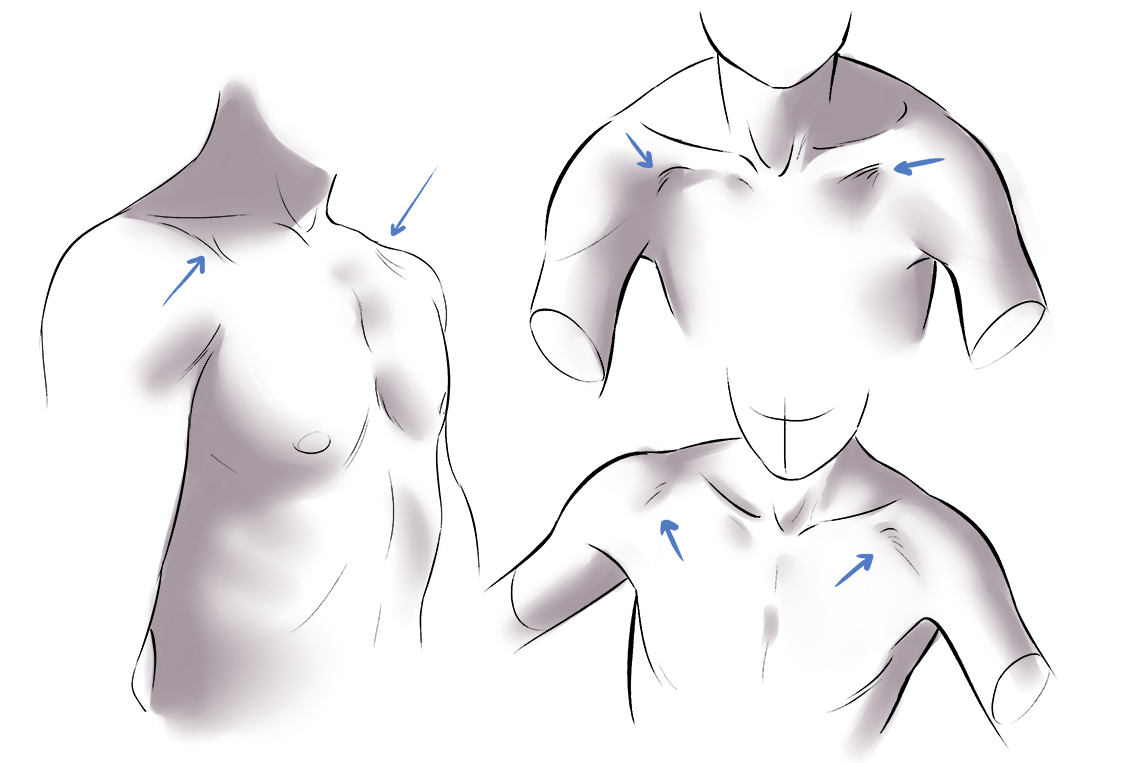
In the female trunk, the pectoral muscles are institute behind the mammary glands. The breasts do non get-go immediately from the collarbones (a common mistake). The breast is apartment at the top, but the breasts starting time from more or less the eye of the pectorals, every bit you can come across in the following examples:
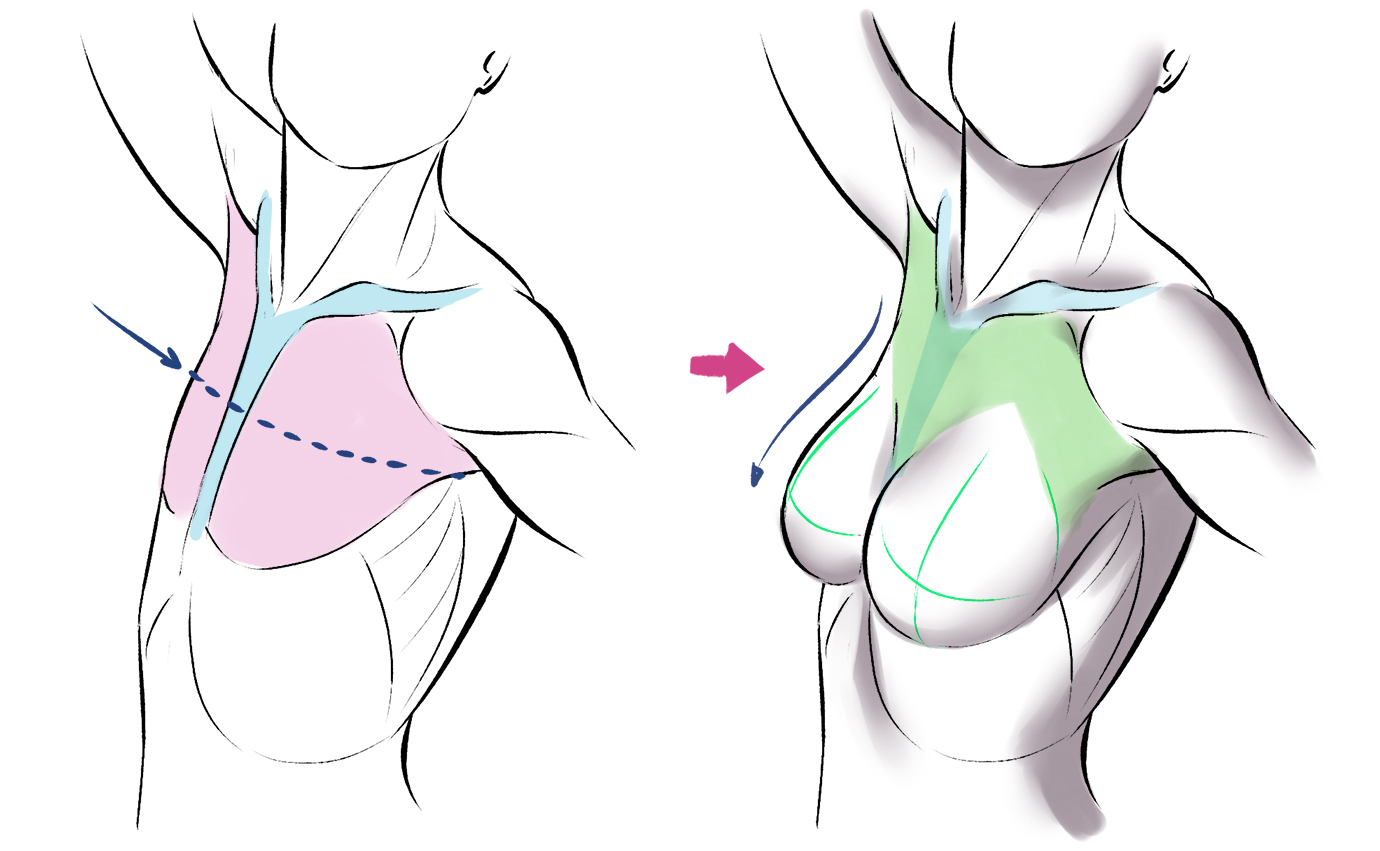
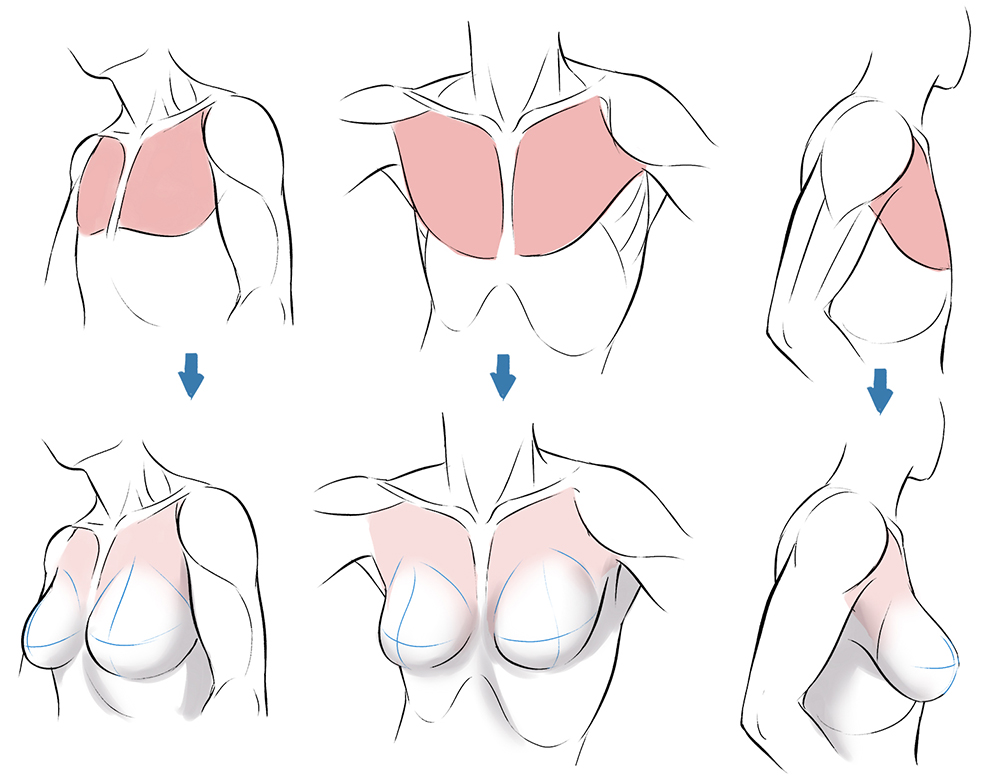
The muscles of the abdomen are in accuse of bending, tilting and rotating the torso.
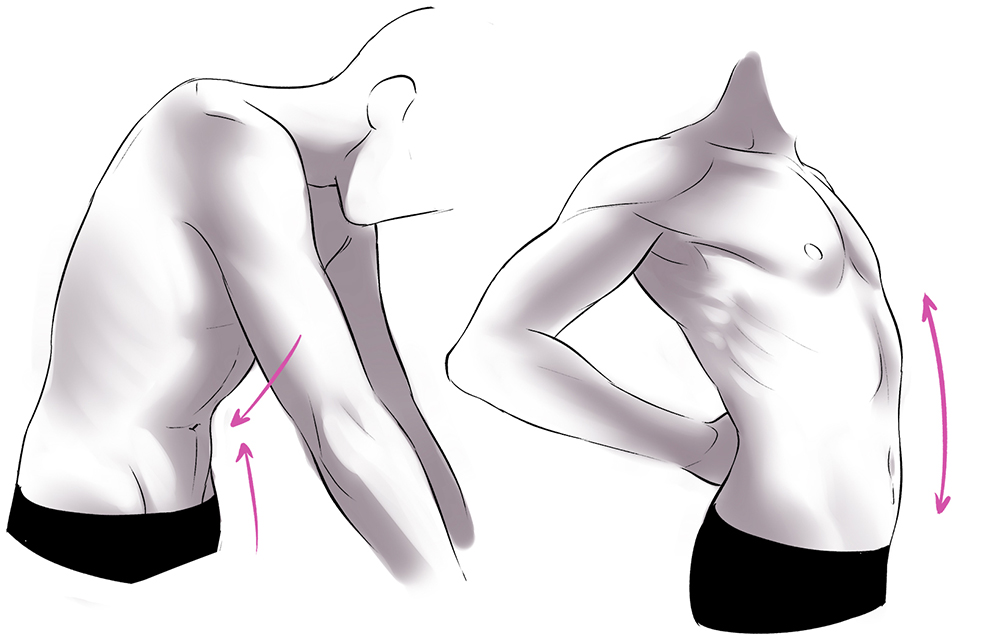
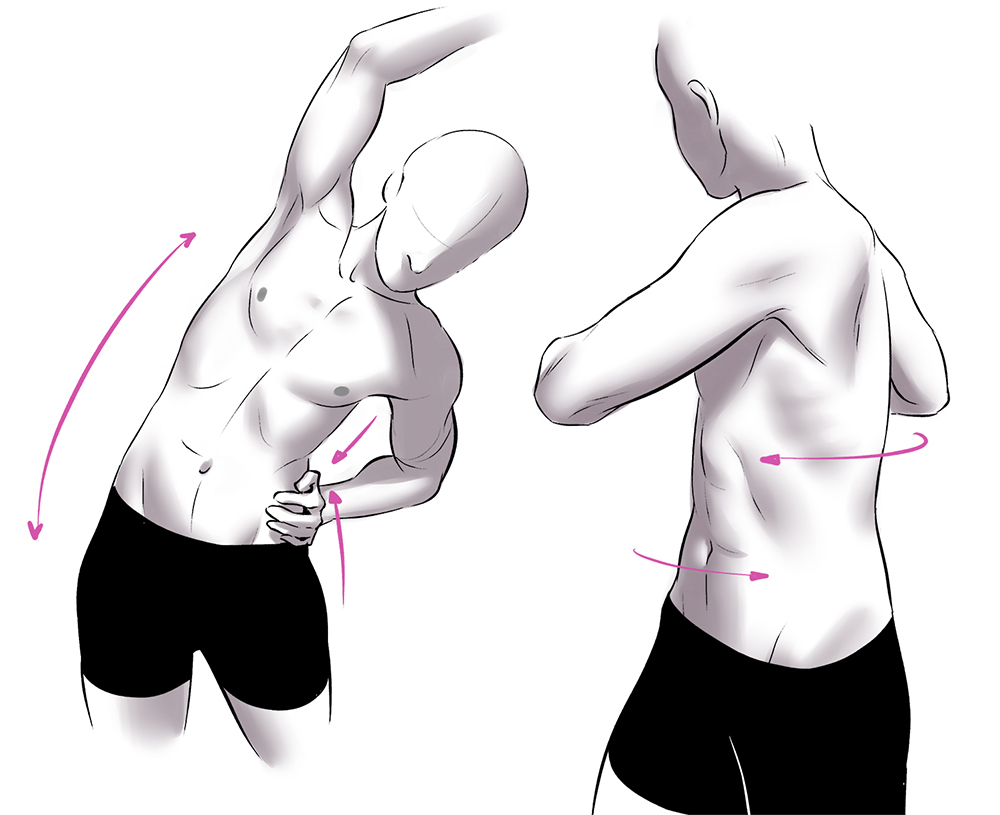
The linea alba (or white line) divides these muscles into two parts:
In the heart, nosotros tin observe the rectus abdominis muscle, beneath the arch of the ribs all the fashion to the pubis. Information technology has 3 intersections that separate the muscle into 4 areas on each side.
The obliques are located to the sides and in a higher place the hip bones.
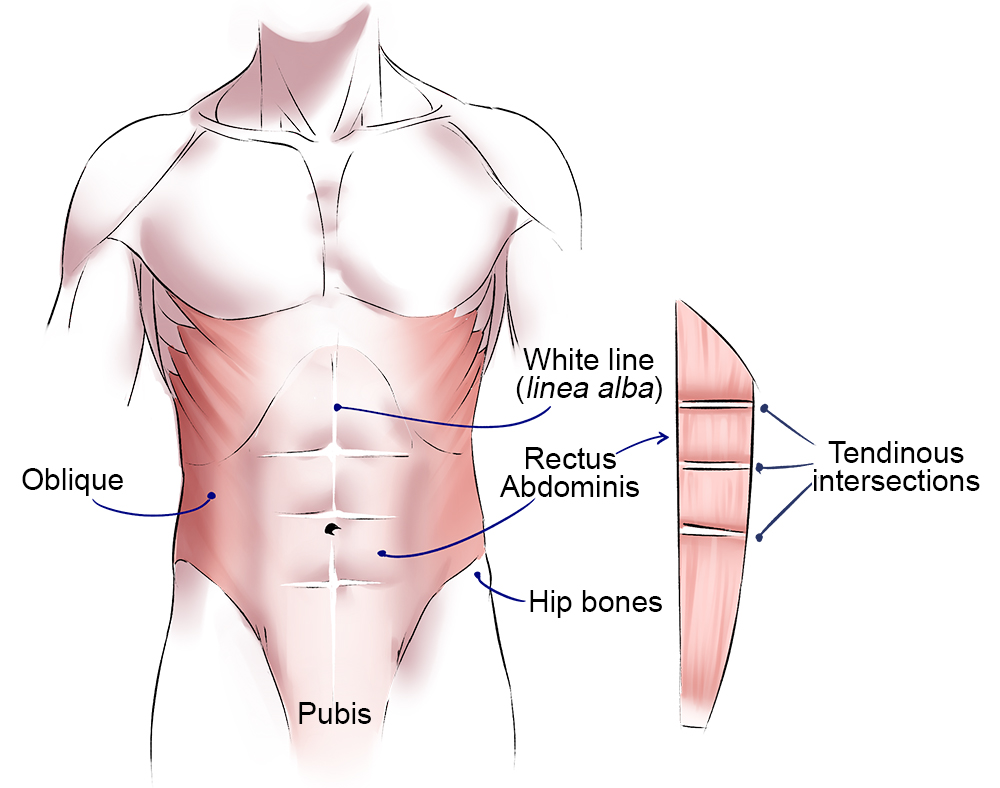
This side view shows how the muscles (dorsal, obliques and serratus anterior) intertwine to create a zig-zag line (A).
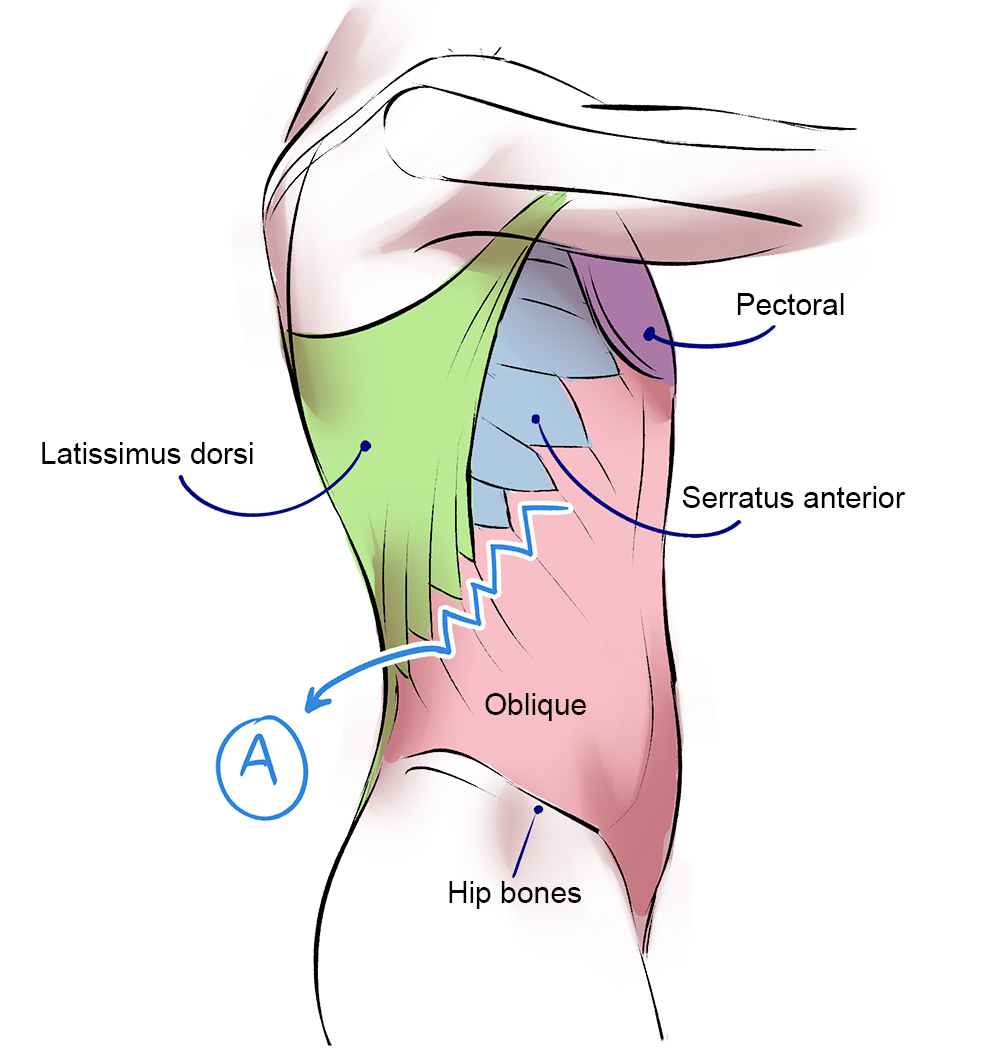
The Muscles of the Arms and Legs
The deltoids cover the shoulder joints. These are thick muscles and are shaped like upside-down triangles. The base of operations is planted in the collarbone and inserts itself into the humerus.
Following the tip of the deltoid, we detect the brachialis muscle. This muscle is pretty deep downwards – I similar to call up of it as a divider between the biceps (located in the front), and the triceps (in the dorsum).
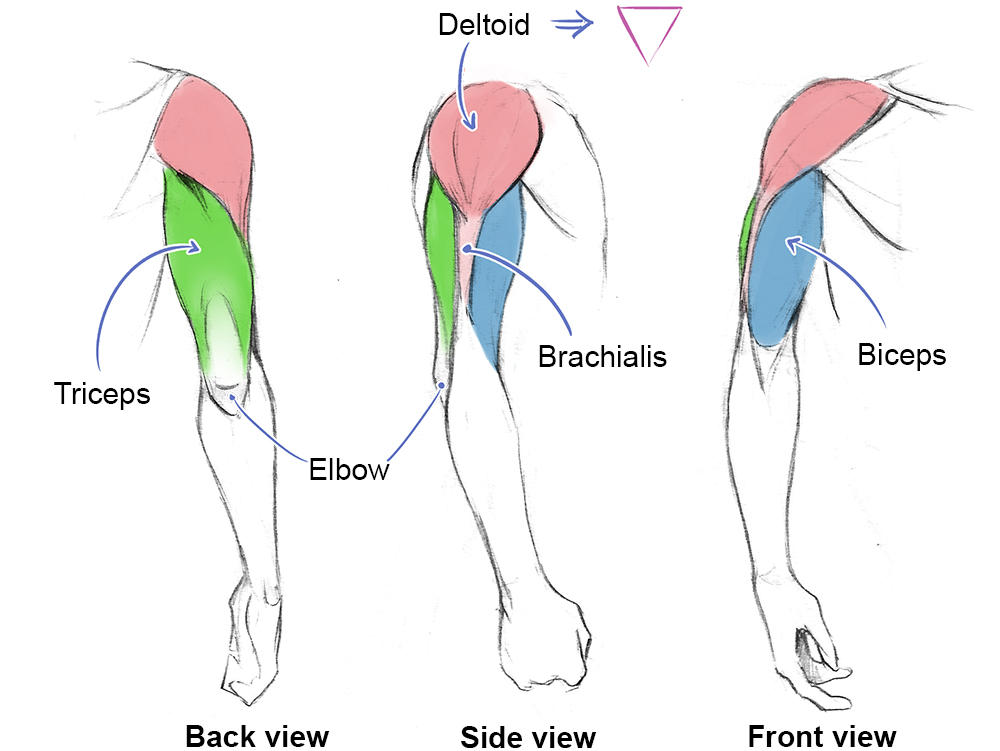
To simplify the biceps, draw a stretched oval. You can remember of the thicker part of the triceps as a horseshoe shape… or a croissant, or a crescent! The flat part of the triceps (the tendon) is continued to the elbow.
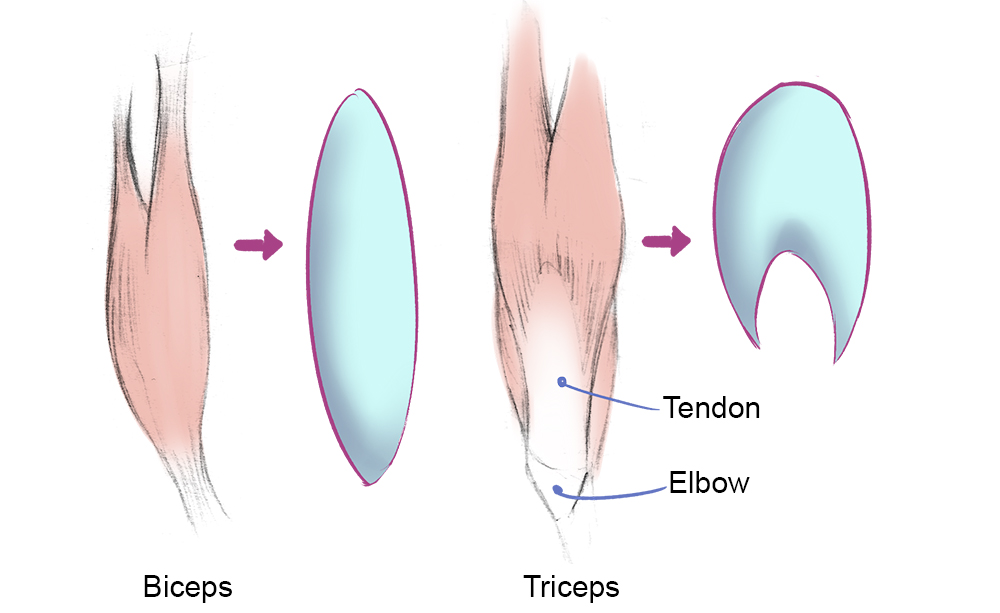
The muscles of the forearm provide mobility to the hand and fingers. They are very like to each other: very elongated, thin, and flat shapes; and so cartoon them can exist a bit disruptive.
There are many, many ways to translate muscles, and it is OK to use any method that is easy for you to understand. In the cease, it all depends on observation and practice to be able to draw with precision. For example, we can delineate the silhouette of the forearm with a couple of ovals. Due to the asymmetry of the forearm, this oval on the aforementioned side as the pollex is slightly smaller, and it is located slightly above the other oval shape.
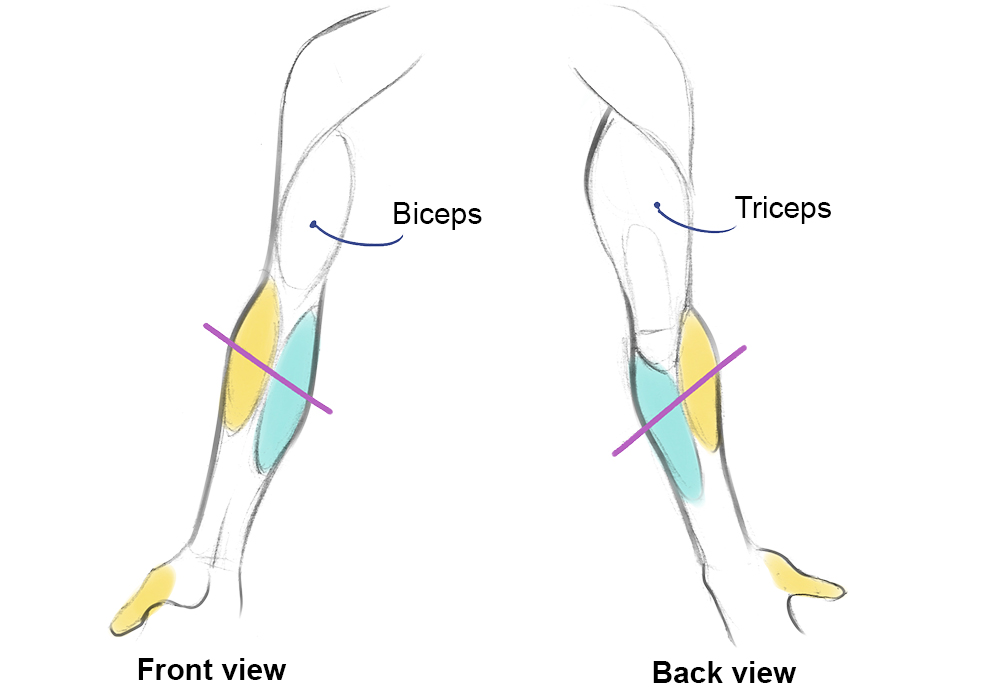
You will find a like situation in the legs. Even though leg muscles are large and distinguishable, there is no demand to draw each i of them in detail – many of them can exist grouped together and drawn as a simple figure. Advisedly observe the outlines and shapes that the muscles create in the body to simplify them properly.
The sartorius muscle divides the leg with a diagonal line. Starting at the sacrum all the way to the inner side of the shin (slightly below the knee), this is the longest muscle in the homo body.
The inner thigh is made upwardly of several adductors, only y'all can grouping them all together and treat them but equally a triangle.
The quadriceps consist of iv individual muscles (one of them is not visible because it is located deep in the thigh) which all come together and join at the same tendon inside the knee joint. As a whole, they are shaped like a teardrop.
The shape of the dogie is mostly defined past the two dogie muscles, which are on the back of the leg and go into the heel. The front end and sides of the leg are made up of other muscles and tendons that allow the toes to motion.
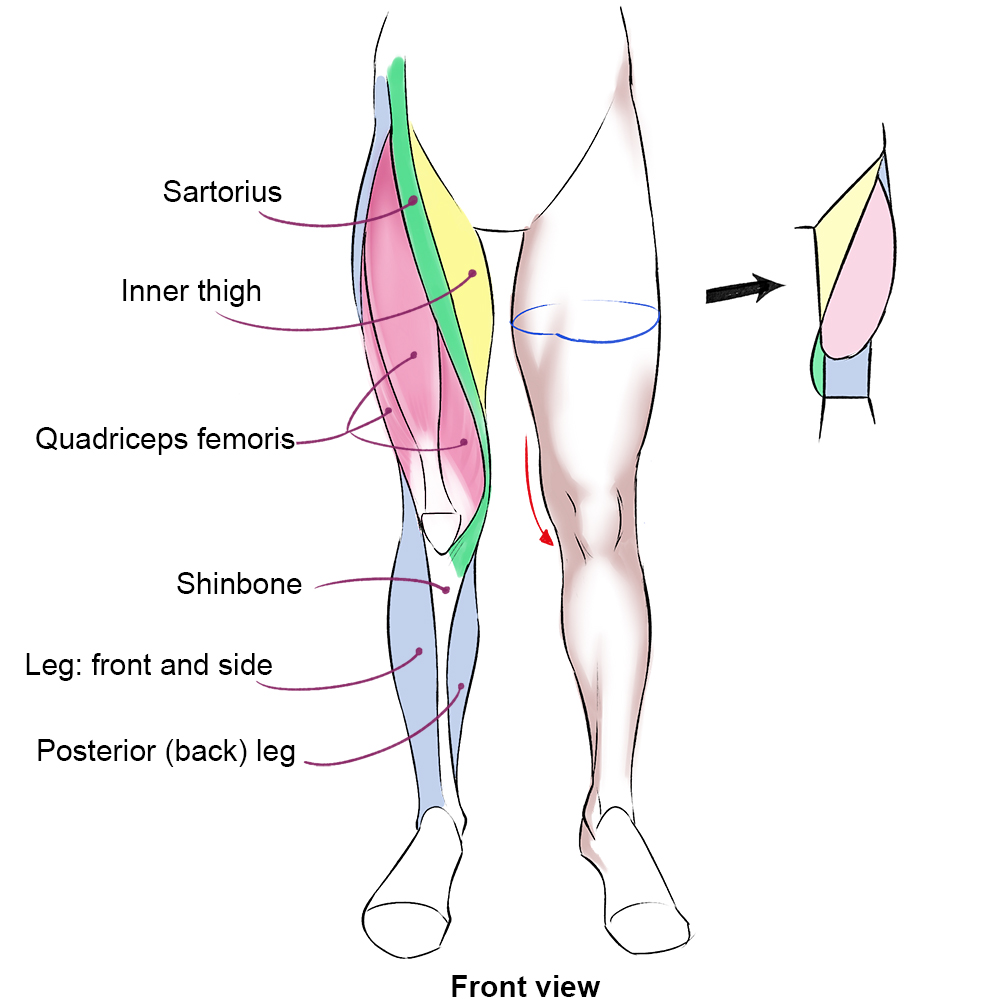
I have grouped together the biceps femoris, semitendinosus and semimembranosus as a single shape forth the thigh. This shape is divided in ii, leaving a diamond shaped pit in the back of the human knee.
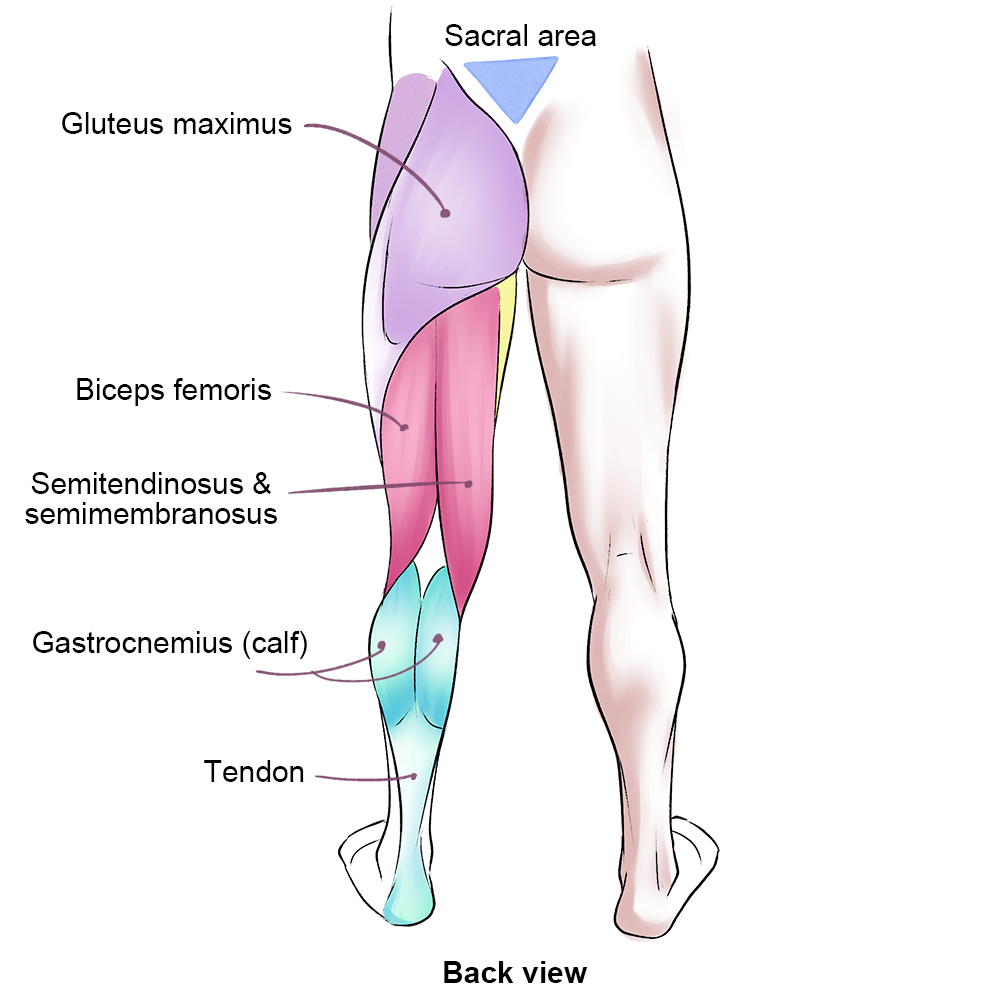
When drawing, shading will aid you marker the muscles without the need to employ lots and lots of lines to mark them out. Ideally, endeavour to highlight the musculus that exerts the most strength in each pose, not all of them at in one case. Otherwise, the drawing will await exaggerated. Unless that's what yous're going for!
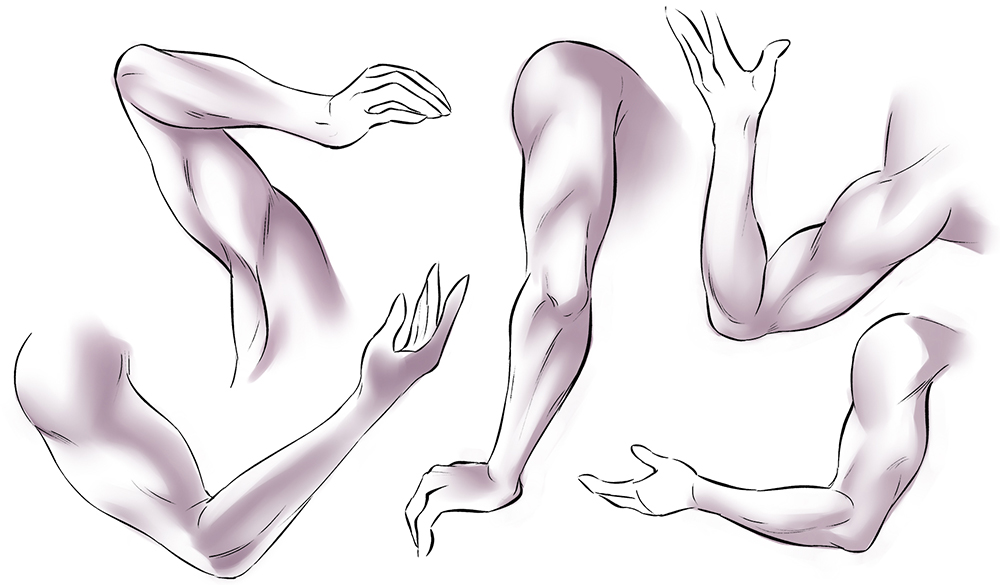
Take a expert look at your references, endeavor to imitate the poses you see to get a better understanding of them. Which trunk part is bending? Which office is stretching?
I hope this guide was helpful to yous. If you lot like, you can visit me on social media and check out my portfolio to see more of my work:
https://www.instagram.com/eri_duh/
https://twitter.com/eri_duh
https://www.artstation.com/eridey
Thank you for reading!
– Eridey
Source: https://www.clipstudio.net/how-to-draw/archives/162629
0 Response to "Realistic Full Body Muscle Drawing"
Postar um comentário